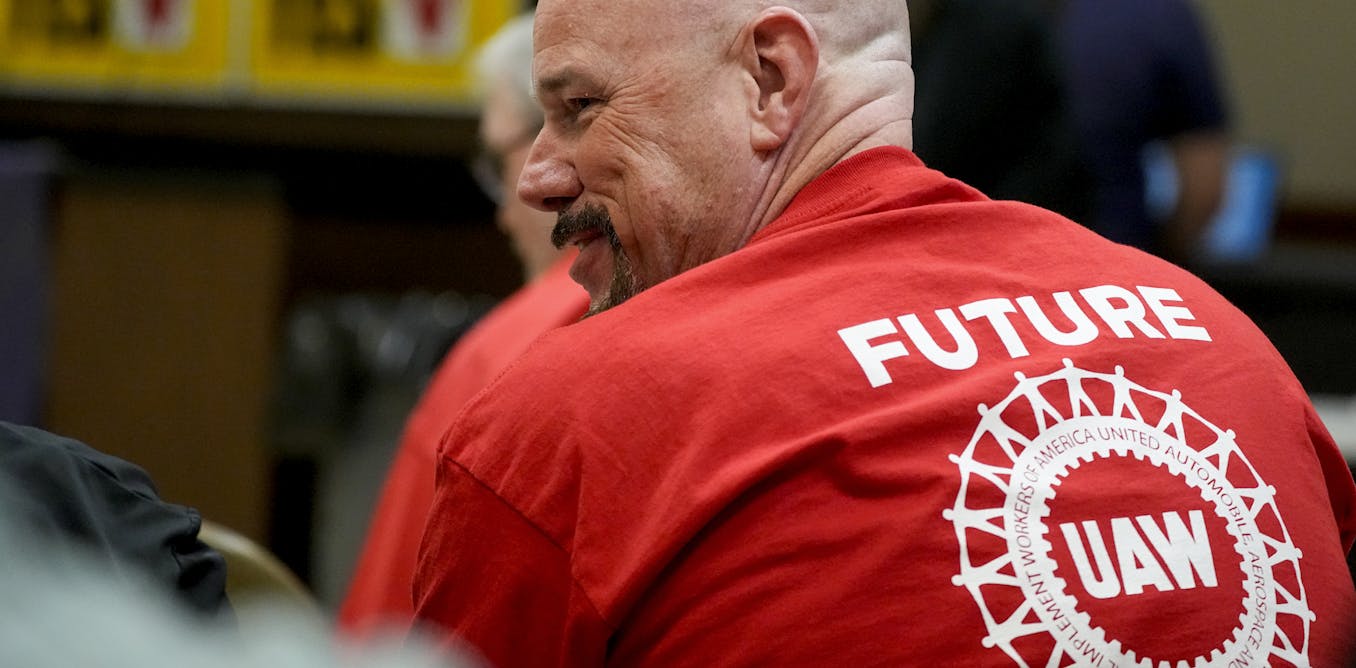Workers at two Mercedes plants near Tuscaloosa, Alabama, will soon vote for the first time on whether they want to join a union.
Until recently, it would have been safe to presume that a majority of the 5,200 people eligible to participate in this election – scheduled to run May 13-17, 2024 – would reject this opportunity to join the United Auto Workers.
The UAW, which has about 150,000 members employed by Ford, General Motors and Stellantis, made eight failed attempts to unionize foreign-owned auto plants in the South over the past 35 years. Two of those drives aimed to organize the entire Volkswagen factory in Chattanooga, Tennessee.
But the third time the UAW tried to organize the VW plant, it prevailed, winning 73% of all ballots cast in an election held there in April.
I conduct research about organized labor in the United States and other countries. My most recent book, “The UAW’s Southern Gamble: Organizing Workers at Foreign-owned Vehicle Plants,” highlights the big challenges workers and the UAW have long faced when trying to organize auto plants in the South. In my view, the union was finally able to succeed in Chattanooga because of its new leadership and closer cooperation with VW workers in Germany.
A successful model
As I explain in my book, one reason it took the UAW so long to score its first plantwide win was that an employer playbook for discouraging unionization had worked according to plan.
The automotive companies operating in the American South had largely located their plants in rural areas with little union membership. They screened out hires who might be sympathetic to unions and divided the workforce by using temp agencies to fill a significant share of positions. They deployed television monitors throughout the plant to run pro-company and anti-union messaging. And they donated lavishly to local churches, charities and politicians to undercut local support for unionization.
At the same time, Southern political and business leaders sought to attract investment – especially from foreign-owned manufacturers – by offering massive subsidies, low taxes, lower labor costs and a largely compliant workforce.
Southern autoworkers get paid less than than their Northern peers and have, until now, had little say over what happens in their workplace.
This model succeeded. Today, roughly 30% of U.S. auto workers are in the South, up from around 15% in 1990.
Whenever the UAW has sought to unionize the industry throughout the region, the Southern political establishment, which the Republican Party dominates, has pushed back.
Most recently, six Southern GOP governors encapsulated that tradition in a joint letter shortly before the VW vote. In it, they denounced the UAW’s organizing drive as “special interests looking to come into our state and threaten our jobs and the values we live by.”
Strong leadership
The UAW’s win in Tennessee suggests that this model has begun to break down. Three factors can explain why it may no longer work.
First, the election of Shawn Fain as UAW president in March 2023 marked a turning point. The charismatic electrician from Kokomo, Indiana, whom MotorTrend recently named “Man of the Year,” wasted no time shifting the UAW away from its prior accommodation with automakers.
Fain used forceful rhetoric and innovative tactics to score wins at the bargaining table throughout the UAW’s concurrent strikes at Ford, General Motors and Stellantis in the fall of 2023.
The new contracts that followed gave workers substantial pay and benefits increases and restored cost-of-living adjustments. Those deals also eliminated a two-tier wage structure that paid workers hired since 2007 significantly less for doing the same job than colleagues with more seniority.
By the end of 2023, the UAW had shown Southern autoworkers that it could deliver gains that their employers were unlikely to grant on their own. More autoworkers throughout the region became interested in joining the union as a result.
New organizing approach
Second, the UAW revamped its approach to labor organizing.
Out went its top-down approach, led by union staffers who weren’t necessarily the most skilled at organizing. Under Fain’s leadership, the UAW hired Brian Shepherd – a proven organizer from the Service Employees International Union – to take charge.
Shepherd has empowered the automotive employees who were supportive of unionization to tailor the organizing drive to what they thought would work best.
For example, at the Mercedes plant, committed employees began to distribute union authorization cards far earlier than UAW had previously recommended, and it dispensed with visiting undecided workers at their homes because they thought that tactic would be counterproductive in the South.
Shepherd has hired professional organizers to back up his team, and he’s promoted the creation of much more highly structured networks within plants than the voluntary organizing committees the UAW had traditionally used.
These changes have paid off. More Southern workers have signed cards authorizing the UAW as their collective bargaining agent than ever before.
German solidarity
Third, the UAW’s relationship with Volkswagen’s German works council leadership, which represents employees in the workplace, has dramatically improved. A works council is an elected body of employees anchored in German law that represents employee interests at the workplace and company levels. It is distinct from the German metalworkers union, IG Metall, which has always been supportive of unionization at German-owned auto plants in the American South.
Ties between the UAW and the works council were strained during the 2014 and 2019 organizing campaigns. But the works council leadership changed in 2021.
This time, the German works council intervened in several instances to soften VW management’s resistance to unionization and to urge Chattanooga employees to vote for the UAW.
Tougher territory
Just because the UAW won by almost a 3-to-1 margin in Chattanooga doesn’t mean that victory at Mercedes in Alabama or elsewhere is a sure thing.
Both the Alabama political establishment and the factory’s management have fought this labor organizing campaign much harder at Mercedes than Volkswagen executives and Tennessee officials did ahead of the vote at the Chattanooga plant.
Forging a close relationship between Mercedes’ German works council and the UAW has proved elusive. On the other hand, a core of Mercedes Alabama employees has proved particularly adept at organizing. They set up a dense network in the plant based on “walkers” – that is, people whose jobs require them to move about the plant.
They have also summarized their circumstances with snappy lines that have gone viral. For example, longtime Mercedes employee Jeremy Kimbrell declared “We are going to end the Alabama discount” – a reference to the lower pay they receive compared to their peers in Michigan and other more established automotive manufacturing hubs.
Mercedes management in Alabama has also made a series of moves that have enraged and emboldened the workers at that plant. It let pay stagnate for many years and instituted a deeply unpopular two-tier wage structure in 2020, which management quickly undid last year after the UAW’s successful strikes.
Mercedes management judged the anti-union campaign to be going so badly that it fired the plant’s chief executive officer, Michael Göbel, and replaced him with the current vice president of operations, Federico Kochlowski, just two weeks before voting was set to begin.
Sacking an unpopular plant manager is a common union-avoidance tactic, much like firing the head coach of a poorly performing sports team to appease fans. VW did it in 2019.
An outcome that’s hard to predict
The outcome of the vote at the Mercedes plant is harder to predict than it was for the Volkswagen factory because Mercedes has never had a union recognition election before. One thing is certain, however: The UAW’s organizing campaign is not ending there.
Fain has repeatedly declared that the UAW intends to get all U.S. autoworkers to join the union – potentially doubling the ranks of its members in the industry.
There are about a dozen more campaigns underway that could follow the vote at Mercedes. At least 30% of the workers at Toyota’s Missouri engine plant and Hyundai’s factory in Alabama have already embraced the UAW – a key first step toward a formal election.

The post “3 reasons the UAW is having success in organizing Southern workers – with two Mercedes plants in Alabama the next face-off” by Stephen J. Silvia, Professor of International Relations, American University School of International Service was published on 05/07/2024 by theconversation.com



































